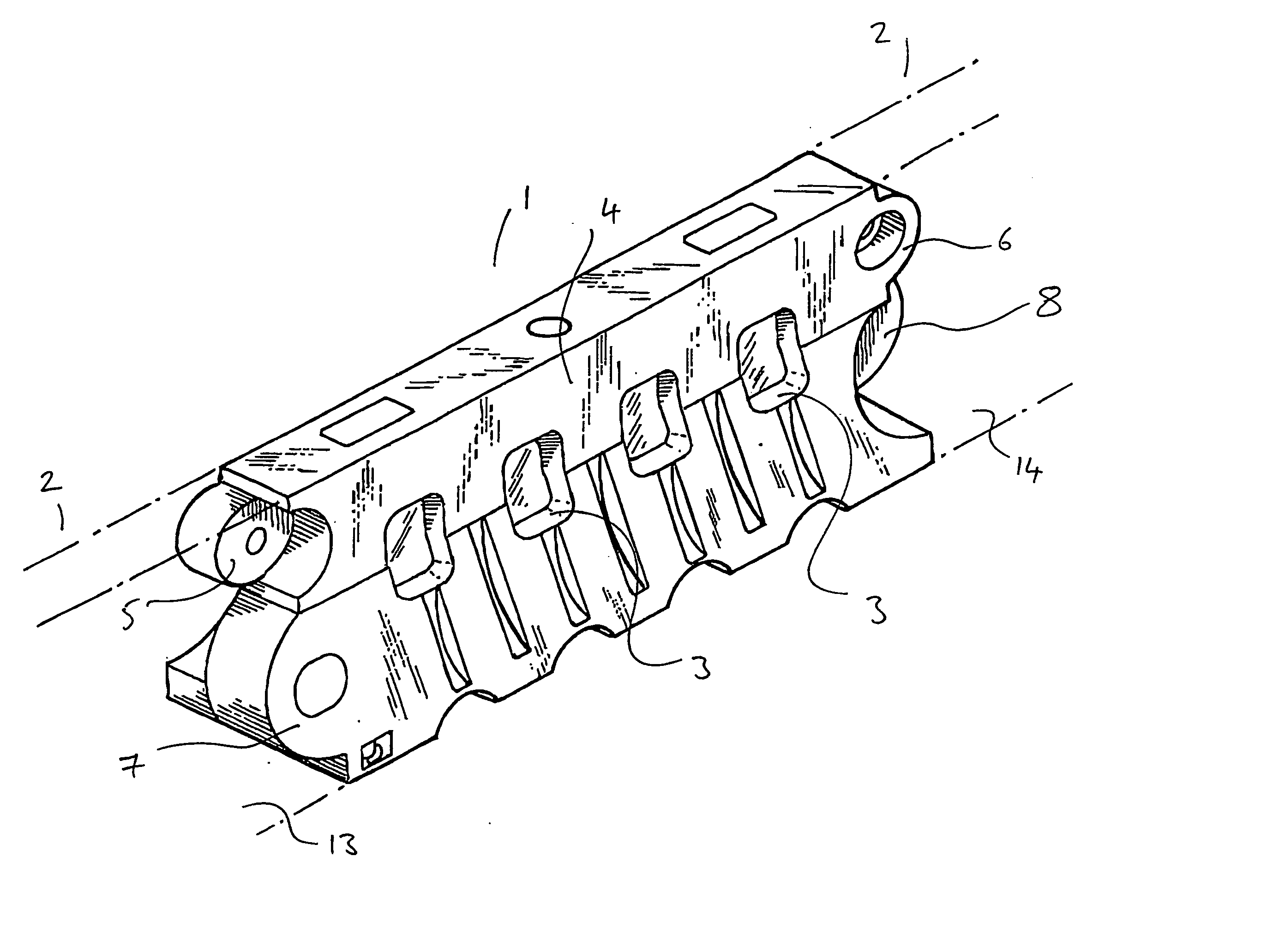Relocatable transportable safety crash barrier system
- Summary
- Abstract
- Description
- Claims
- Application Information
AI Technical Summary
Benefits of technology
Problems solved by technology
Method used
Image
Examples
Embodiment Construction
[0009] The relocatable traffic barrier constructed in accordance with the present invention is greatly stiffened against lateral deflections due to vehicle impacts by the crash rail. The greater the number of modules to which a single span of the crash rail is secured, the better this stiffening effect will be. The crash rail or rails may be of known type, such as rolled steel “W” sections made for the purpose or proprietary designed steel sections. In addition to providing an alternative form of construction to existing traffic barriers with crash-resistance, the invention allows easy handling and transport, permitting modules to be brought to site with or without crash rails or the fittings attached and assembled into a continuous barrier by connecting them end-to-end. After attaching the fittings (if not attached to the modules before their connection together) the crash rail itself may be attached and the modules ballasted as necessary by filling with fluid.
[0010] The barrier m...
PUM
 Login to View More
Login to View More Abstract
Description
Claims
Application Information
 Login to View More
Login to View More - R&D
- Intellectual Property
- Life Sciences
- Materials
- Tech Scout
- Unparalleled Data Quality
- Higher Quality Content
- 60% Fewer Hallucinations
Browse by: Latest US Patents, China's latest patents, Technical Efficacy Thesaurus, Application Domain, Technology Topic, Popular Technical Reports.
© 2025 PatSnap. All rights reserved.Legal|Privacy policy|Modern Slavery Act Transparency Statement|Sitemap|About US| Contact US: help@patsnap.com



